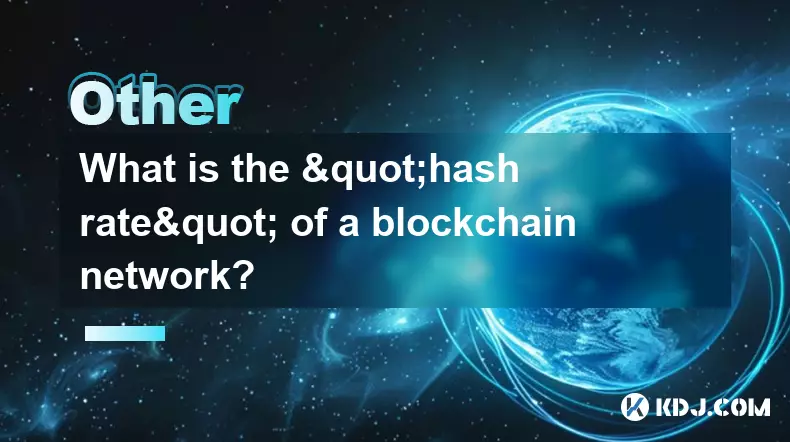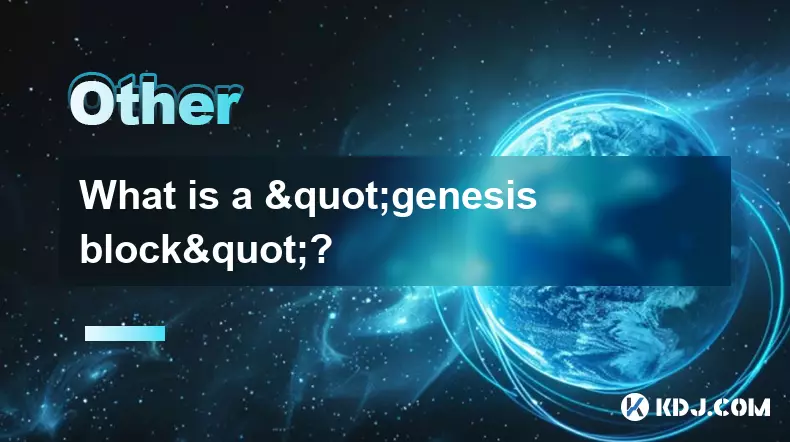-
 bitcoin
bitcoin $99177.955738 USD
-7.32% -
 ethereum
ethereum $3187.183061 USD
-12.38% -
 tether
tether $0.999809 USD
0.00% -
 xrp
xrp $2.117933 USD
-9.42% -
 bnb
bnb $906.710033 USD
-9.17% -
 solana
solana $149.367737 USD
-10.74% -
 usd-coin
usd-coin $0.999816 USD
0.01% -
 tron
tron $0.281498 USD
-0.38% -
 dogecoin
dogecoin $0.156292 USD
-8.00% -
 cardano
cardano $0.500744 USD
-10.19% -
 hyperliquid
hyperliquid $38.087358 USD
-4.58% -
 chainlink
chainlink $14.097831 USD
-8.54% -
 bitcoin-cash
bitcoin-cash $463.329916 USD
-9.22% -
 ethena-usde
ethena-usde $0.999078 USD
-0.01% -
 unus-sed-leo
unus-sed-leo $9.475862 USD
-0.79%
How are transactions verified on a blockchain?
Nodes verify transactions using consensus rules, ensuring validity before miners or validators include them in a block, securing the blockchain against fraud and double-spending.
Aug 04, 2025 at 12:35 am

Understanding the Role of Nodes in Transaction Verification
In a blockchain network, nodes are fundamental components responsible for maintaining the integrity and security of the system. Every node stores a copy of the entire blockchain ledger and participates in the validation of transactions. When a user initiates a transaction—such as sending cryptocurrency from one wallet to another—the transaction is broadcast to the peer-to-peer network of nodes. Each node receiving the transaction checks its validity based on predefined consensus rules. These checks include verifying that the sender has sufficient balance, ensuring the digital signature is correct, and confirming that the transaction hasn't already been spent (preventing double-spending).
If the transaction passes these initial checks, it is added to a pool of unconfirmed transactions known as the mempool. At this stage, the transaction is not yet part of the blockchain. The node does not finalize the transaction but instead holds it for miners or validators to include in the next block. This decentralized verification by multiple nodes ensures that no single entity controls the validation process, reinforcing the trustless nature of blockchain technology.
Miners and the Process of Block Creation
After a transaction enters the mempool, miners (in proof-of-work blockchains like Bitcoin) take the lead in organizing and confirming transactions. Miners collect a group of pending transactions from the mempool and attempt to bundle them into a new block. To do this, they must solve a computationally intensive cryptographic puzzle known as proof of work. This process requires significant computational power and energy, acting as a deterrent against malicious actors.
The goal is to find a hash value for the block that meets the network’s current difficulty target. Once a valid hash is found, the miner broadcasts the newly created block to the network. Other nodes then independently verify the block’s contents, including each transaction and the correctness of the proof of work. If everything checks out, the block is added to the blockchain, and the transactions within it are considered confirmed. The miner who solved the puzzle is rewarded with newly minted cryptocurrency and transaction fees.
Validators in Proof-of-Stake Systems
In proof-of-stake (PoS) blockchains like Ethereum 2.0, transaction verification is handled by validators instead of miners. Validators are chosen to create new blocks based on the amount of cryptocurrency they 'stake' as collateral and other factors such as staking duration. To participate, a user must lock up a certain amount of coins—32 ETH in Ethereum’s case—as a security deposit.
When a validator is selected, they propose a new block containing verified transactions. Other validators then attest to the validity of the proposed block through a voting mechanism. Once a supermajority agrees, the block is added to the blockchain. If a validator attempts to validate fraudulent transactions, they risk losing part or all of their staked funds through a process called slashing. This economic incentive aligns validators’ interests with the network’s security.
Validators continuously run specialized software and maintain an online presence to monitor the network. Their role is critical in ensuring that only legitimate transactions are confirmed, and they are rewarded with transaction fees and staking rewards for their service.
Digital Signatures and Cryptographic Security
Each blockchain transaction is secured using asymmetric cryptography. When a user sends funds, they sign the transaction with their private key, a secret string known only to them. This signature proves ownership of the funds without revealing the key itself. Nodes verify the signature using the sender’s corresponding public key, which is derived from the private key and visible on the blockchain.
The verification process ensures that only the rightful owner can spend their cryptocurrency. Even a minor alteration in the transaction data invalidates the signature, making tampering immediately detectable. This cryptographic foundation is what makes blockchain transactions immutable and secure once confirmed. Without a valid digital signature, no transaction can progress beyond the mempool.
Consensus Mechanisms and Finality
For a transaction to be considered fully verified, the blockchain network must achieve consensus—a state where the majority of nodes agree on the validity and order of transactions. In proof-of-work systems, consensus is reached when subsequent blocks are built on top of the block containing the transaction. Each additional block increases the transaction’s confirmation count, making reversal exponentially harder.
In proof-of-stake systems, finality is achieved through mechanisms like finality gadgets (e.g., Casper FFG in Ethereum), where checkpoints are voted on by validators. Once a checkpoint is finalized, the transactions up to that point are considered irreversible. Different blockchains have varying confirmation requirements; for instance, six confirmations are often considered secure in Bitcoin, while Ethereum may require fewer due to faster block times.
Consensus ensures that all participants have a consistent view of the ledger. It prevents forks from persisting and maintains the chronological integrity of the blockchain. Without consensus, conflicting versions of the ledger could exist, undermining trust in the system.
Transaction Lifecycle from Initiation to Confirmation
- A user creates a transaction using their wallet software, specifying the recipient, amount, and fee.
- The wallet signs the transaction with the sender’s private key.
- The signed transaction is broadcast to the network and received by multiple nodes.
- Nodes validate the transaction’s syntax, signature, and input availability.
- Valid transactions are placed in the mempool.
- Miners or validators select transactions from the mempool, prioritizing those with higher fees.
- The selected transactions are included in a candidate block.
- The block undergoes the consensus process—either proof of work or proof of stake.
- Upon successful validation by the network, the block is appended to the blockchain.
- The transaction receives its first confirmation and gains additional confirmations with each new block.
This lifecycle ensures that transactions are transparent, secure, and resistant to censorship or manipulation.
Frequently Asked Questions
Can a transaction be reversed after it’s confirmed?No, once a transaction is confirmed and embedded in the blockchain, it becomes immutable. Reversing it would require altering all subsequent blocks and gaining control of the majority of the network’s computational or staking power, which is practically infeasible in secure, decentralized networks.
What happens if two miners find a valid block at the same time?This creates a temporary fork in the blockchain. Nodes accept the first block they receive and continue building on it. Eventually, the chain with more cumulative work (in PoW) or greater validator support (in PoS) becomes the accepted version. The other block becomes orphaned, and transactions in it return to the mempool if not included elsewhere.
How long does it take for a transaction to be verified?Verification time depends on the blockchain. Bitcoin averages 10 minutes per block, while Ethereum processes blocks every 12–14 seconds. High network congestion or low transaction fees can delay confirmation as transactions wait in the mempool.
Are all transactions public on the blockchain?Yes, all confirmed transactions are publicly visible on the blockchain. While wallet addresses are pseudonymous, sophisticated analysis can sometimes link addresses to real-world identities, especially when interacting with regulated exchanges.
Disclaimer:info@kdj.com
The information provided is not trading advice. kdj.com does not assume any responsibility for any investments made based on the information provided in this article. Cryptocurrencies are highly volatile and it is highly recommended that you invest with caution after thorough research!
If you believe that the content used on this website infringes your copyright, please contact us immediately (info@kdj.com) and we will delete it promptly.
- Bitcoin's Wild Ride: Saylor, Kiyosaki, and the Quest for $200K
- 2025-11-05 10:50:13
- Culex, Cardano, and Aster: A Crypto Cocktail of Mosquitoes, Dips, and CZ Fuel
- 2025-11-05 11:00:17
- Crypto Presales, Coin Growth, and Established Coins: Navigating the 2025 Buzz
- 2025-11-05 11:00:17
- La Culex, Crypto Investment, and Pudgy Penguins: A NYC Perspective
- 2025-11-05 10:30:13
- Zcash Defies Crypto Crash: Reversal Risk on the Horizon?
- 2025-11-05 11:00:01
- Score Big with BetMGM: NBA, NFL, and the TOP150 Bonus Code
- 2025-11-05 08:50:13
Related knowledge

What is a block explorer and how do you use it?
Oct 24,2025 at 12:36am
What Is a Block Explorer?1. A block explorer is a web-based tool that allows users to view and analyze data on a blockchain network in real time. It f...

What is the "hash rate" of a blockchain network?
Oct 10,2025 at 03:55pm
Understanding Hash Rate in Blockchain Networks1. The hash rate refers to the total computational power being used to process transactions and mine new...

What is a "genesis block"?
Oct 15,2025 at 07:55pm
Understanding the Genesis Block in CryptocurrencyThe genesis block is the very first block in a blockchain network. It serves as the foundation upon w...

Who is Satoshi Nakamoto?
Oct 15,2025 at 01:01pm
Who is Satoshi Nakamoto?1. Satoshi Nakamoto is the pseudonymous individual or group credited with creating Bitcoin, the first decentralized cryptocurr...

How does blockchain technology actually work?
Oct 11,2025 at 02:36pm
Understanding the Core Mechanism of Blockchain1. At its foundation, blockchain is a decentralized digital ledger that records transactions across mult...

What is a token economy?
Sep 20,2025 at 12:18am
Understanding the Foundations of a Token Economy1. A token economy in the context of cryptocurrency refers to a system where digital tokens are used a...

What is a block explorer and how do you use it?
Oct 24,2025 at 12:36am
What Is a Block Explorer?1. A block explorer is a web-based tool that allows users to view and analyze data on a blockchain network in real time. It f...

What is the "hash rate" of a blockchain network?
Oct 10,2025 at 03:55pm
Understanding Hash Rate in Blockchain Networks1. The hash rate refers to the total computational power being used to process transactions and mine new...

What is a "genesis block"?
Oct 15,2025 at 07:55pm
Understanding the Genesis Block in CryptocurrencyThe genesis block is the very first block in a blockchain network. It serves as the foundation upon w...

Who is Satoshi Nakamoto?
Oct 15,2025 at 01:01pm
Who is Satoshi Nakamoto?1. Satoshi Nakamoto is the pseudonymous individual or group credited with creating Bitcoin, the first decentralized cryptocurr...

How does blockchain technology actually work?
Oct 11,2025 at 02:36pm
Understanding the Core Mechanism of Blockchain1. At its foundation, blockchain is a decentralized digital ledger that records transactions across mult...

What is a token economy?
Sep 20,2025 at 12:18am
Understanding the Foundations of a Token Economy1. A token economy in the context of cryptocurrency refers to a system where digital tokens are used a...
See all articles










































































